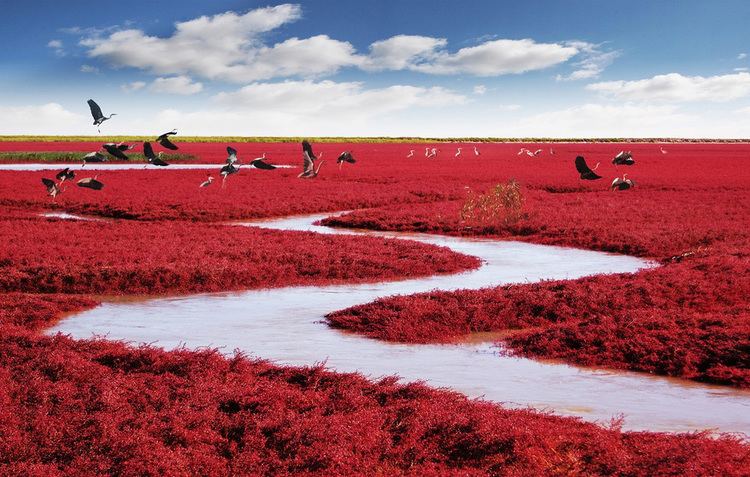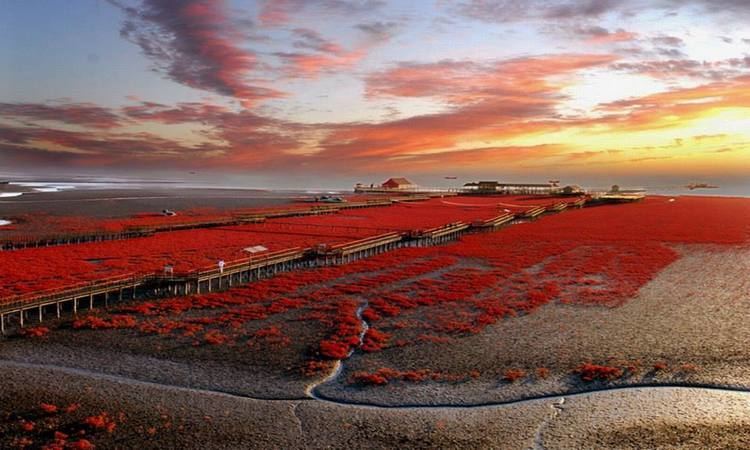Population 602,541 (2000) | Area 4,084 km2 | |
 | ||
Country Peoples Republic of China | ||
Map of Panjin
Panjin (simplified Chinese: 盘锦; traditional Chinese: 盤錦; pinyin: Pánjǐn) is a prefecture-level city and a major oil production centre of Liaoning province, People's Republic of China, and is situated on the northern coast of Liaodong Bay of the Bohai Gulf. It borders Anshan to the northeast and east, Yingkou across the Liao River, as well as Jinzhou to the west and northwest. The city has an administrative area of 4,071 square kilometres (1,572 sq mi), is home to 1.39 million people all in the built-up area made of 2 urban districts plus Dawa and Panshan Counties being urbanized.
Contents
- Map of Panjin
- Amazing tourist place in china red sea beachpanjin city
- Administration
- Geography
- Demographics
- Attractions
- Economy
- Panjim panaji goa municipal food market and fish market
- Pinto bar restaurant st inez panjim goa at taste of goa festival
- References

Amazing tourist place in china red sea beachpanjin city
Administration
Panjin has four immediate sub-municipal divisions. There are 1 county and 3 districts.
Panjin was established as a prefecture-level city with its current boundaries by the State Council on June 5, 1984.
Geography
Panjin is located between 40° 40'−41°27' N and 121° 31'−122° 28' E. It has a monsoon-influenced humid continental climate (Köppen Dwa). It has an annual mean temperature of 9.2 °C (48.6 °F) and receives over 2700 hours of sunshine a year. The Shuangtaizi River, which diverts from the Liao River upstream from the city, runs through the city and flows into the Liaodong Bay. The Liao River serves as the border between Panjin and the city of Yingkou. The two other prefecture-level cities that borders Panjin are Jinzhou and Anshan.
Demographics
At the end of 2003, there were a total of 1 243 905 people residing in the Panjin. The urban population was 566 046.
Ethnic groups
Gender makeup
Population trends The population saw an increase of 3.81‰ in 2003. The natality was 7.60‰, and the mortality was 4.70‰, which made a natural population increase of 2.9‰.
Attractions
Major points of interest include:
Economy
The main industries in Panjin include oil, petroleum refinery, tourism, and agriculture, primarily rice. The short grain rice of Panjin are of high quality and great taste. Panjin is also famed for its Chinese mitten crabs, a famous delicacy in Chinese cuisine. They can be processed into crab meat tofu and "drunken crab".
